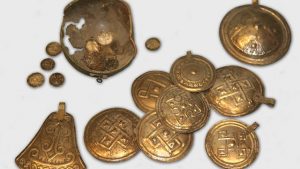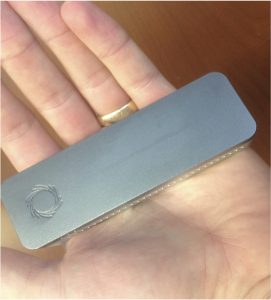Just a quick post here. There is a paper of interest I thought I would call attention to: Source: SILVA, RDP, Greengenes, NCBI and OTT — how do these taxonomies compare? | BMC Genomics by Monika Balvočiūtė and Daniel H. Huson Abstract: Background A key step in microbiome sequencing analysis is read assignment to taxonomic units. …
Of possible interest: Call for Input: Grand Challenges and Opportunities for Environmental Engineering and Science for the 21st Century Committee Appointed and Call for Input: Grand Challenges in Environmental Engineering and Science for the 21st Century To help guide the next generation of environmental engineers and scientists, the National Academies of Sciences, Engineering, and Medicine …
This is a cross-posting of a Press Release from the American Society for Microbiology. A team of Swiss chemists and microbiologists have shown that a species of anaerobic bacterium can inhibit corrosion on archeological artifacts made of iron. The research is published March 10 in Applied and Environmental Microbiology, a journal of the American Society …
Worth a listen – On “Here and Now” – Jeremy Hobson interviews Jordan Peccia about the ongoing NPR study on How Do Indoor Microbiomes Affect Human Health? The National Academies of Science, Engineering and Medicine are conducting a study of microbial communities inside buildings and how they affect human health. Source: How Do Indoor Microbiomes Affect Human Health? …
We just published an extended genome report from eight bacteria that were sequenced as part of the “Built Environment Reference Genome” (BERG) project. BERG is a microBEnet run effort to increase the number of reference genomes in the Built Environment (BE) by offering free genome sequencing to a number of labs working in the field. …
Call for Papers: MoBE 2017 Special Issue of BioMed Central’s Microbiome Journal (Submission Guidelines) We invite submissions of MoBE papers highlighting recent research and emerging hot topics along the theme of “MoBE Research to Applications” for our peer-reviewed MoBE special issue. Publishing charges are sponsored by the MoBE meeting and BioMed Central’s Microbiome Journal. This special issue will be available by October 1st, …
There is an increasing number of studies with a large number genomes recovered from isolate, metagenome, or single cell sequencing. To bridge the gap between the available genome sequences and available phenotype information, we have developed Traitar, a bioinformatics software to phenotype bacteria based on their genome sequence (see workflow below) . Traitar includes phenotype models for …
There has been some interest in our recent preprint describing Oxford Nanopore MinIONTM sequencing for 16S rRNA microbiome characterization and I was asked to write a post for microbenet on this technology. Disclaimers – this paper is a work in progress – our paper has not yet been peer-reviewed and we are continuing to revise …
Microbes indoors Building-related symptoms are linked to the in vitro toxicity of indoor dust and airborne microbial propagules in schools: A cross-sectional study – JT Salin – Environmental Research ($41.95) We examined whether the in vitro toxicity of indoor samples from school buildings was associated with work-related health symptoms (building-related symptoms, BRS). Administrators of the Helsinki …
Microbes in the house and office A survey of xerophilic Aspergillus from indoor environment, including descriptions of two new section Aspergillus species producing eurotium-like sexual states – Cobus M. Visagie – MycoKeys (OA) Xerophilic fungi grow at low water activity or low equilibrium relative humidity and are an important part of the indoor fungal …






